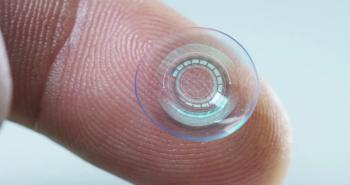
ARVO 2023: Lexitas presents its modified NEI scale
Andrew Pucker, OD, MS, PhD, FAAO, and George Magrath, MD, discuss Lexitas Pharma Services' work on modification of the National Eye Institute's corneal fluorescein staining scale.
Andrew Pucker, OD, MS, PhD, FAAO, and George Magrath, MD, share highlights from their discussion about Lexitas Pharma Services' work on modification of the National Eye Institute's corneal fluorescein staining scale during the 2023 Association for Research in Vision and Ophthalmology (ARVO) meeting in New Orleans.
Editor's note: This transcript has been lightly edited for clarity.
George Magrath, MD:
ey, my name is George Magrath. I'm an ophthalmologist at the Medical University of South Carolina and the CEO of Lexitas Pharma Services.
We're here at ARVO this year presenting our work on a modification of the National Eye Institute's corneal fluorescein staining scale. This is a really important work that has taken years to culminate over many trials, and it's been done by a really fantastic group of collaborators, including Gary Fowkes, and Ken Sol, and Andrew Pucker, Richard Zinc, and others.
What this study really did was it took the corneal fluorescein grading schemes that had been used in the past, and it really has validated what we've seen converging into the scheme that's used in most clinical trials. So it gives validation for upcoming dry eye studies on how we we grade corneal fluorescein staining.
This is really important because one of the problems with multicenter nationwide large,
Not only is it important to have a validated system like this that was created by investigators for investigators, but it's also important to have robust training on it, and that's a big part of the next step of this project, which is going to be to train the investigators on exactly how to gray consistently using this scheme.
So really, this is the first time that we've had a true scale that's been validated by a group of investigators with decades and decades of experience in dry eye research.
Andrew Pucker, OD, MS, PhD, FAAO:
Hello, everyone, I am Dr. Andrew Pucker. I'm the senior director of clinical and medical sciences at Lexitas Pharma Services. And today, I'm very happy to be at ARVO presenting our new scale. It's the Lexitas modified NEI scale as a poster.
So in this poster, what we did is we compared it to two additional scales that are established for clinical trials. One is the original NEI grading scale—zero to 3 grading scale—and essentially what investigators did with the scales is they looked at this card or the scale itself, and compared to the patient's eye. And while that is advancement for the time, as you might expect, there's going to be a lot of variability between investigators at different sites.
Because of that, there was an advancement in the scale, which led to dot counting within the different regions of the
So now that investigators are going to be more repeatable, and also we can have a greater scale in grading, which could help us pick up more subtle differences.
So really the the point of my poster is to compare these 3 different scales. And what we found is that the Lexitas modified grading scale is as repeatable—or more repeatable—in these simpler scales, which is surprising to me because if you might expect looking at smaller bins, maybe you'd have less variability.
But really this just gets the point home that having these additional directions is important and I think that our studies going forward should incorporate this because this is going to make it much more repeatable and believable in the end
Newsletter
Want more insights like this? Subscribe to Optometry Times and get clinical pearls and practice tips delivered straight to your inbox.















































